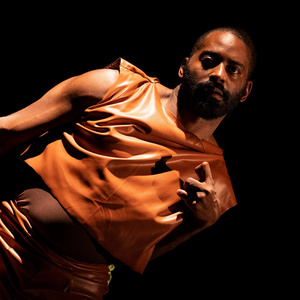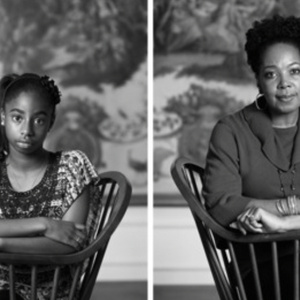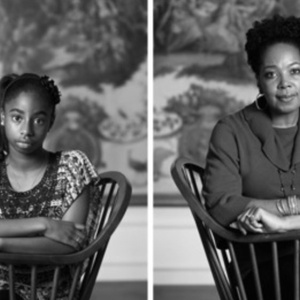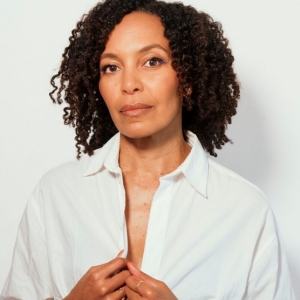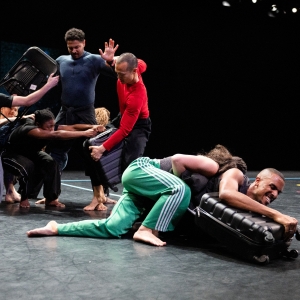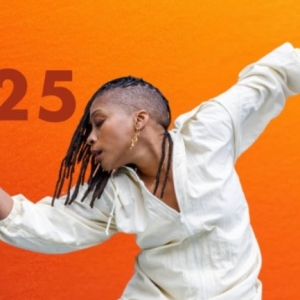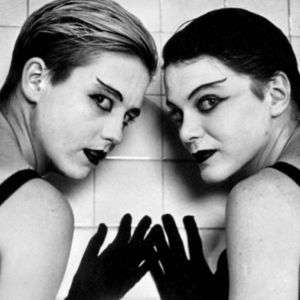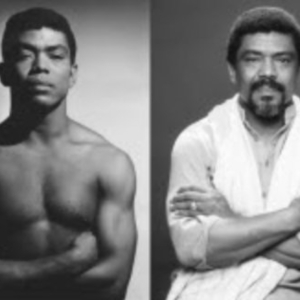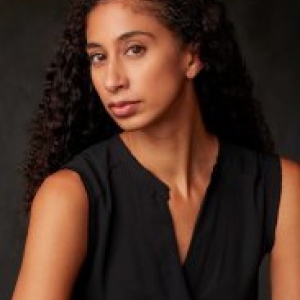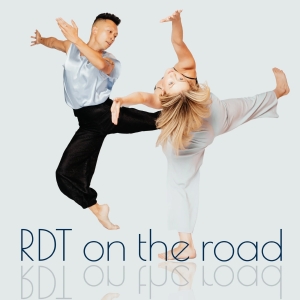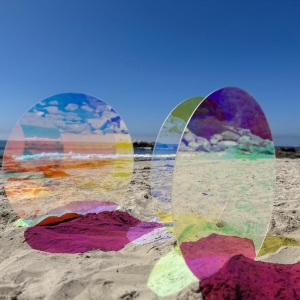
At a Glance
Time Needed: 180 min.
Ages: All
Allows Food/Drink: No
Luggage Storage: No
99 Gansevoort St, New York, NY 10014 Get Directions
Whitney Museum of American Art Videos
Why did these mural painters write random letters and numbers on our walls in order to translate Mary Heilmann's painting into a large-scale exhibition? There are several techniques for translating a painting into a wall-sized mural, while maintaining the original scale and proportions. Jana Liptak, the lead fabricator on the exhibition 'Mary Heilmann: Long Line,' shares with us the technique she used here, called a "scribble grid." We captured some of the behind-the-scenes process of how Jana and her fellow mural painters translated Mary Heilmann's painting onto the wall in our fifth floor galleries. Mary Heilmann: Long Line is organized by Laura Phipps, Associate Curator. Learn more about 'Mary Heilmann: Long Line,' here: https://whitney.org/exhibitions/mary-heilmann-long-line And experience the mural yourself, as the outside world changes through the windows: http://whitney.org/general-admission #whitneymuseum #maryheilmann #contemporaryart #muralpainting #muralpainter #howto #artistprocess #behindthescenes #currentexhibitions #exhibition
On the occasion of Shifting Landscapes, artists Amalia Mesa-Bains, Teresita Fernandez, and Leslie Martinez discuss how their individual artistic journeys have shaped their sense of place and their understanding of the land they share. Marcela Guererro, DeMartini Family Curator, moderates the conversation. Amalia Mesa-Bains is an artist and cultural critic who has worked to define Chicanx and Latinx art in the United States and Latin America. Her work explores Mexican American women’s spiritual practices, colonial and imperial histories, and the recovery of cultural memory and identity. She has published books and articles, including "Domesticana: The Sensibility of Chicana Rasquache," Ceremony of Spirit: Nature and Memory in Contemporary Latino Art, and Homegrown: Engaged Cultural Criticism. She is a recipient of the 2022 Latinx Artist Fellowship and a MacArthur Foundation Fellow. Teresita Fernández is a Brooklyn-based artist whose practice questions themes of power, visibility, and erasure. Fernández challenges ideas about land and landscape by exposing the history of colonization and the inherent violence embedded in how we imagine and define place, and, by extension, one another. Fernández was appointed to the United States Commission of Fine Arts by President Barack Obama in 2011, and in 2016, she organized the influential U.S. Latinx Arts Futures Symposium with the Ford Foundation to address the dearth of Latinx representation in the mainstream art world. She is known for her mixed-media sculptural panels, sculptures, installations, and public works. Fernández is a MacArthur Foundation Fellow. Leslie Martinez lives and works in Dallas, Texas. Their use of color and materiality speaks to the power of abstraction as a form of radical imagination and world-building. They combine a no-waste approach with methodologies of rasquachismo, a term coined by scholar Tomás Ybarra-Fausto to describe a Chicano “attitude rooted in resourcefulness yet mindful of stance and style.” Martinez is a recipient of the 2022 Latinx Artist Fellowship.
What's scarier than a hairy, giggling artwork in an empty gallery? Probably a lot of things, but this is still pretty creepy. Registrar Brenna Cothran lets us sneak a peek at how she uses a flashlight to examine Lynn Hershman Leeson's 'Giggling Machine, Self Portrait as Blonde' (1968), on view in Sixties Surreal. Psst: Leeson will be delivering this year's Annenberg Lecture at the Whitney on November 5—don't miss it: https://whitney.org/events/annenberg-lecture-hershman-leeson Learn more about 'Giggling Machine, Self Portrait as Blonde,' and other works in the Sixties Surreal exhibition here: https://whitney.org/exhibitions/sixties-surreal Book tickets to visit: http://whitney.org/general-admission #whitneymuseum #lynnhershmanleeson #contemporaryart #multimediaart #spooky #spookyseason #registrar #behindthescenes #americanart #sixtiessurreal #1960s #surrealism #arthistory #currentexhibitions #exhibition
Now open! High Wire: Calder’s Circus at 100 🎠🎪 One of Calder’s most iconic works—and one of the Whitney’s most beloved—is back. 🎥 Go behind the scenes as Calder’s troupe of acrobats, clowns, and animals take their places for the grand return of Cirque Calder. Featuring over one hundred objects, this once-in-a-generation exhibition traces his evolution into a pioneer of modern sculpture. Experience the Circus in person on the 8th floor of the Whitney, from Oct 18, 2025–March 2026. Learn more about the exhibition here: https://whitney.org/exhibitions/calders-circus Book tickets to visit: http://whitney.org/general-admission #whitneymuseum #americanart #calderscircus #alexandercalder #currentexhibitions #exhibition #modernart #circus #performanceart #arthistory
Christine Sun Kim is an artist who works with sound, language, and the complexities of communication in her wide-ranging approach to artmaking. She uses musical notation, infographics, and language—both in her native American Sign Language (ASL) and written English—to create drawings, site-specific murals, paintings, video installations, and sculptures. For this Walter Annenberg Lecture, Kim presents “Deaf Death,” a lecture-performance that explores the tendency of text programs to autocorrect the word “deaf” to “death.” Using images and incisive commentary, Kim questions what defines disability, and how different definitions reflect fears and hopes for the future. A conversation between Kim and Scott Rothkopf, Alice Pratt Brown Director follows the presentation.
How to make installing Soft Toilet (artwork) look easy 🚽 🚧 🏗️ 🎀 “I am for an art that is political-erotical-mystical, that does something other than sit on its ass in a museum.” — Claes Oldenburg in his 1961 manifesto "I Am For..." His Soft Toilet, 1966, takes that directive literally, mutating a rigid porcelain fixture of everyday life into a drooping, hand-sewn vinyl form. Experience this work among others by Yayoi Kusama, Andy Warhol, Ed Ruscha, and more in Sixties Surreal. Learn more about the exhibition here: http://whitney.org/exhibitions/sixties-surreal Book tickets to visit: http://whitney.org/general-admission #whitneymuseum #americanart #sixtiessurreal #1960s #surrealism #arthistory #currentexhibitions #exhibition #claesoldenburg #softsculpture #modernart — Claes Oldenburg, Soft Toilet, 1966. Wood, vinyl, kapok, wire, plexiglass on metal stand and painted wood base, 56 1/8 × 31 5/16 × 30 1/8 in. (142.6 × 79.5 × 76.5 cm). Whitney Museum of American Art, New York; 50th Anniversary Gift of Mr. and Mrs. Victor W. Ganz 79.83a-c. ©️ Claes Oldenburg Gunvor Nelson and Dorothy Wiley, Schmeerguntz, 1966. 16mm film, black and white, sound; 15 min. Filmform, Stockholm, Sweden. Courtesy Filmform and the artists
More in Greenwich Village
More Museums
- The Tenement Museum
- New Museum
- International Center of Photography
- Museum at Eldridge Street
- National Museum of the American Indian
- National September 11 Memorial & Museum
- The Rubin Museum of Art
- The Morgan Library & Museum
- Museum of Modern Art (MoMA)
- Museum of Arts and Design
Whitney Museum of American Art Frequently Asked Questions
The closest subway stops to the Whitney Museum of American Art at 99 Gansevoort St are:
1. 14th Street - 8th Avenue (A, C, E, L trains): This is the closest subway stop to the museum, located just a few blocks away. You can take the A, C, E, or L trains to get here.
2. 14th Street - 7th Avenue (1, 2, 3 trains): Another convenient option is to take the 1, 2, or 3 trains to 14th Street - 7th Avenue. From there, it's a short walk to the museum.
As for recommendations, the Whitney Museum is located in the vibrant Meatpacking District, known for its trendy restaurants, bars, and shops. After visiting the museum, I recommend exploring the neighborhood and enjoying some delicious food. Here are a few nearby recommendations:
1. Santina: This stylish Italian restaurant is located right next to the museum and offers a unique coastal Italian dining experience. Their colorful and flavorful dishes are a must-try.
2. Bubby's High Line: If you're in the mood for comfort food, head to Bubby's High Line. They serve delicious American classics like pancakes, burgers, and pies. Plus, they have a lovely outdoor seating area.
3. The Standard Biergarten: For a more casual experience, visit The Standard Biergarten. This lively beer garden offers a great selection of beers, pretzels, and sausages. It's a perfect spot to relax and soak in the atmosphere.
For the latest subway updates, I recommend checking the official website of the Metropolitan Transportation Authority (MTA). You can find real-time service updates, planned service changes, and other useful information at the following link: MTA Info.
Enjoy your visit to the Whitney Museum and have a fantastic time exploring the Meatpacking District!
The closest NYC bus stops to the Whitney Museum of American Art at 99 Gansevoort St are:
1. Gansevoort St/10 Av: This bus stop is served by the M11 bus. You can check for updates on the M11 bus schedule [here](http://bustime.mta.info/m/index?q=M11).
2. 9 Av/W 14 St: This bus stop is served by the M14A and M14D buses. You can check for updates on the M14A and M14D bus schedules [here](http://bustime.mta.info/m/index?q=M14A) and [here](http://bustime.mta.info/m/index?q=M14D).
Please note that bus schedules may vary, so it's always a good idea to check for updates before your visit. Enjoy your time at the Whitney Museum!
The ideal length of time to plan for a visit to the Whitney Museum of American Art in New York City can vary depending on your level of interest in American art and your schedule. However, I would recommend setting aside at least 2-3 hours to fully explore the museum and appreciate its extensive collection.
The Whitney Museum showcases a wide range of American art from the 20th and 21st centuries, including paintings, sculptures, photographs, and multimedia installations. With seven floors of galleries, there is plenty to see and experience. Take your time to immerse yourself in the artworks, read the accompanying descriptions, and engage with the thought-provoking exhibitions.
If you're a passionate art enthusiast or have a particular interest in American art history, you may find yourself spending even more time at the museum. On the other hand, if you have limited time or a busy itinerary, you can still have a fulfilling visit by focusing on specific exhibitions or artists that pique your curiosity.
Remember, the Whitney Museum is conveniently located in the vibrant Meatpacking District, offering easy access to other attractions, restaurants, and shopping opportunities. So, plan your visit accordingly to make the most of your time in this dynamic neighborhood.
The Whitney Museum of American Art in New York City has a food and drink policy that allows visitors to bring their own snacks and non-alcoholic beverages into the museum. However, please note that eating and drinking are only permitted in designated areas, such as the outdoor terraces and the ground-floor lobby.
If you prefer to dine inside the museum, the Whitney offers a variety of dining options. The museum's ground-floor café, Untitled, is a popular choice for a quick bite or a leisurely meal. They serve a seasonal menu featuring locally sourced ingredients and offer a range of options, including vegetarian and gluten-free dishes. The café also has a full-service bar where you can enjoy a selection of craft beers, wines, and specialty cocktails.
For those looking for a more upscale dining experience, the Whitney's restaurant, Studio Cafe, located on the eighth floor, offers panoramic views of the city skyline. The menu features contemporary American cuisine with a focus on fresh, seasonal ingredients. Reservations are recommended for the Studio Cafe, especially during peak hours.
Please keep in mind that outside food and drink are not allowed in the museum's galleries to protect the artwork. So, if you bring your own snacks, make sure to enjoy them in the designated areas or at the outdoor terraces.
The Whitney Museum of American Art in New York City does not have a luggage storage facility on site. However, they do offer a coat check service where you can leave your coats and small bags. It's important to note that larger bags, suitcases, and backpacks are not permitted in the galleries and must be stored elsewhere.
If you have larger items or luggage that you need to store, there are several options available nearby. Many hotels offer luggage storage services for their guests, so you can check with your hotel if they provide this service. Additionally, there are several third-party luggage storage companies located throughout the city that offer secure storage for a fee. These services can be found online or through mobile apps, and they often have multiple locations near popular tourist areas.
Remember to plan ahead and check the specific requirements and fees for each storage option, as they may vary. This way, you can enjoy your visit to the Whitney Museum and explore the city without the burden of carrying your luggage with you.
Yes, the Whitney Museum of American Art is a fantastic destination for visitors from other countries and non-English language speakers. While English is the primary language used within the museum, the artwork itself transcends language barriers and can be appreciated by people from all backgrounds.
The museum showcases a diverse collection of American art from the 20th and 21st centuries, including paintings, sculptures, photographs, and multimedia installations. The visual nature of the artwork allows visitors to engage with the pieces on a purely aesthetic level, regardless of language proficiency.
Additionally, the museum offers informative wall labels and exhibition guides in multiple languages, including Spanish, French, German, Italian, and Japanese. These resources provide helpful context and insights into the artwork, ensuring a rich and meaningful experience for all visitors.
Furthermore, the Whitney Museum frequently hosts special exhibitions and events that celebrate the diversity of American art and culture. These exhibitions often feature works by artists from various backgrounds, offering a unique and inclusive perspective for international visitors.
Overall, the Whitney Museum of American Art is a must-visit destination for art enthusiasts and cultural explorers, regardless of language proficiency. Its diverse collection, multilingual resources, and commitment to inclusivity make it an excellent choice for visitors from around the world.
The Whitney Museum of American Art in New York City is a fantastic cultural destination suitable for visitors of all ages. While there is no specific age range recommendation, the museum offers a diverse range of exhibitions and programs that cater to different interests and age groups.
Families with children can enjoy the Whitney's family programs, which include interactive tours, art-making workshops, and special events designed to engage young minds. The museum also has a dedicated Family Guide available to enhance the experience for children.
For adults, the Whitney Museum offers a thought-provoking collection of American art, featuring works by renowned artists from the 20th and 21st centuries. The museum's exhibitions cover a wide range of themes and artistic styles, providing a rich and immersive experience for art enthusiasts.
In summary, the Whitney Museum of American Art welcomes visitors of all ages, making it a great destination for families, adults, and anyone with an interest in American art and culture.
Videos


